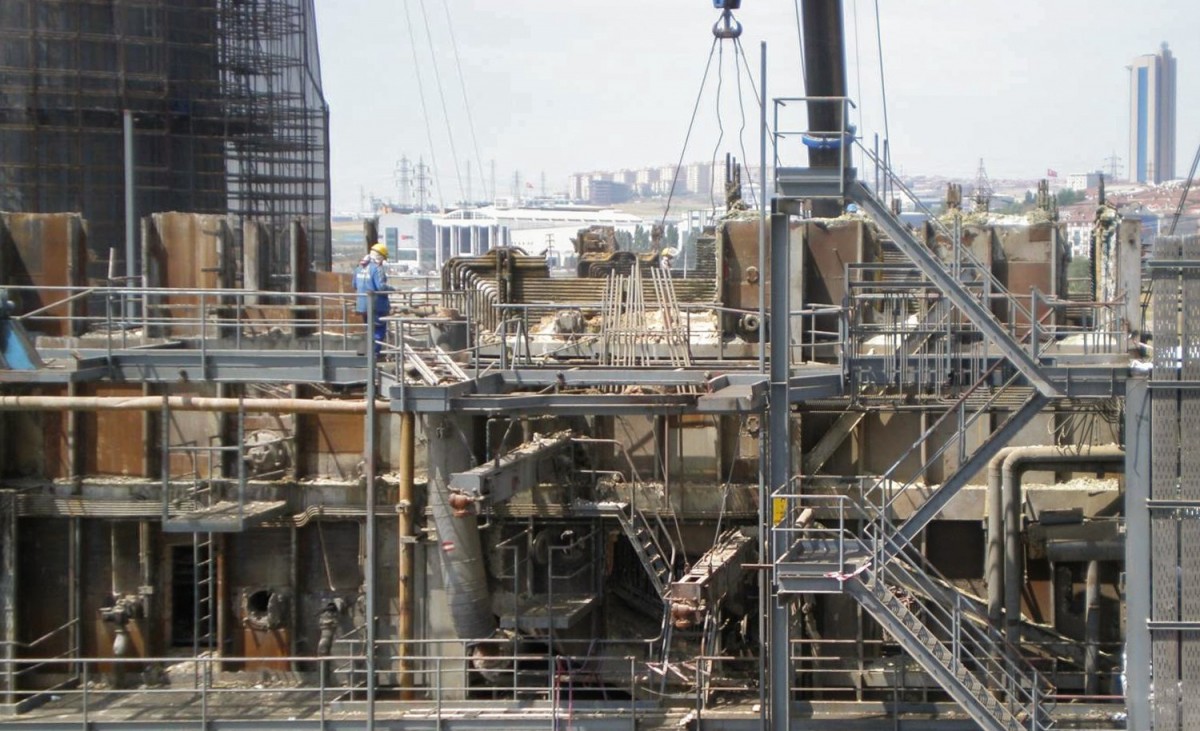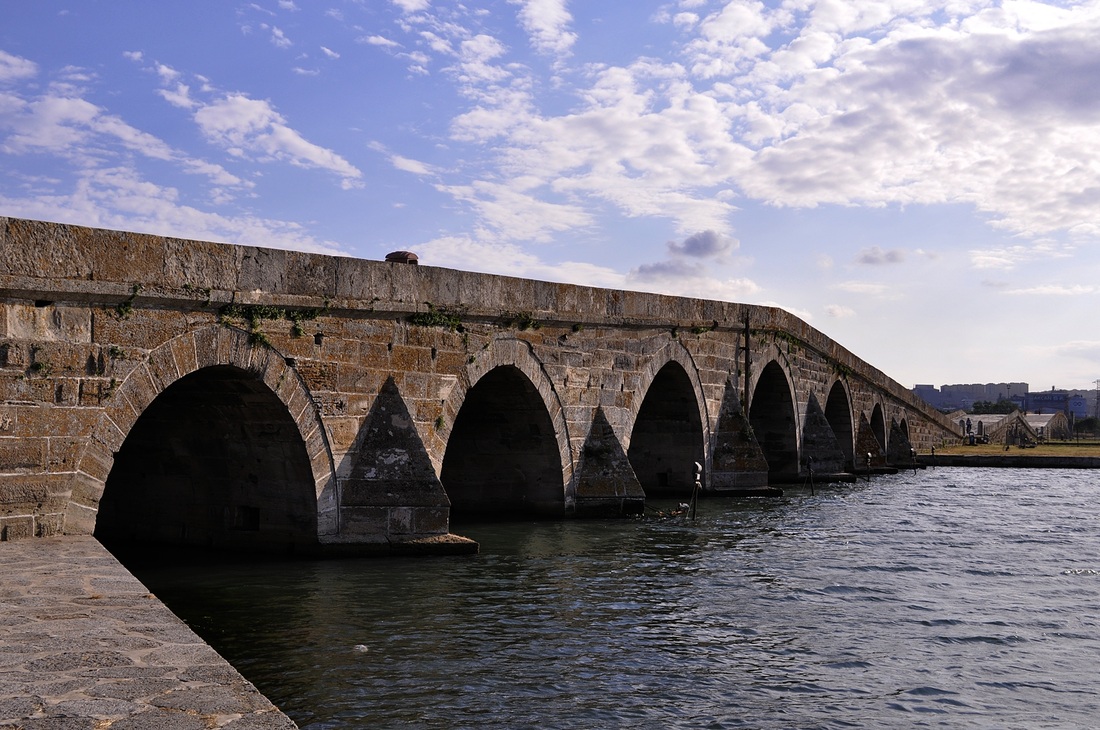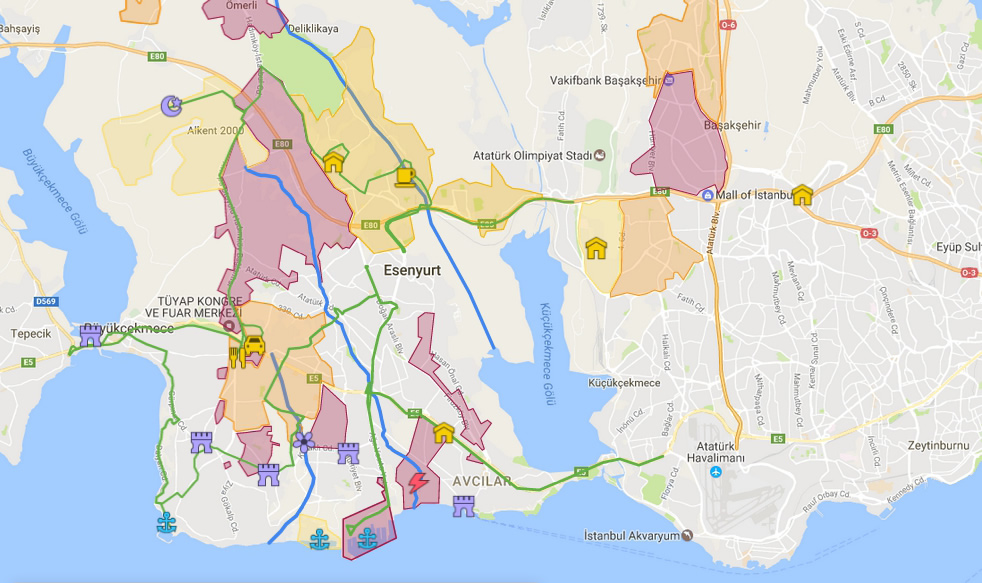Scale Matters!
Excursion to The Westend of Istanbul with Orhan Esen, February 11th 2017.
[widgetkit id=21563]
This excursion explores the western fringes of the dense urban core of the Metropolitan Area between the two lakes, the “graeter” and “smaller” Çekmece’s. At the westend of the urban cluster one can observe some of the most active development: Actual frontier with the still-rural is being constantly pushed forward, simultaneously producing areas of extreme density with projects at large scales behind the demarcation line. The history of urbanisation here goes back a mere 40 years, in most corners much less.
The forced resettlement of industrial zones to the periphery since 1990s has restructured the metropolitan area, transferring the focus of energy and industrial production as well as logistics and export infrastructure into the westend. The westend has attracted waves of informal settlements as well as efforts of the public to encircle these with vast formal mass housing areas. Urban formations between the lakes today resemble chinese scale and outlook.
Districts of Avcılar, Esenyurt, Beylikdüzü make up the core of the territory in question; Büyükçekmece, Başakşehir and Arnavutköy are partly here. They all have gained the status of independent districts as recent offsprings of the vast agricultural county of former greater-Çatalca. Once being modest farming and fishing communities, their mayors today compete each other “making” and branding their towns, to give them each a distinct urban character via different strategies. Investors and mayors develop mega structures, architects get a free hand to experiment, inhabitants literally shape their built environment. Last but not least, the westend is a cemetery of urbanisation: a weird collection of failed mega investments of various kinds is also decaying around.
Here, at its unknown and breathtaking side, Istanbul emerges as a megapolis.
The Avcilar Corridore
To reach the westend, we will move along the D100 (former E5, former London drive) the southern one of the two westbound highways. Passed lake Küçükçekmece we climb up the heights of Avcılar (‘The Hunters’) district, geologically morain formations, prone to seismic risks. Most damage in Istanbul during the 1999 earthquake was observed here. The district still appears as a post-earthquake topos, struggling with its impact.
Hilton double tree hotel (drive by)
It is the first fully steel frame highrise structure in Istanbul (by UrasXDilekçi architects) erected in Avcılar aiming to demonstrate the favorable qualities of that technology vis e vis seismic risks.
Ambarlı new-harbour (‘Marport’)
The harbour of Istanbul is currently being relocated: The central harbour in Haydarpaşa is still in use but being privatized and given up. One of the alternative sites is being developed in the west.

Ambarlı powerplants (drive by)
Only 18 % of energy consumed in Istanbul is produced within the province. The 2 powerplants in Ambarlı cover roughly 4/5 of the established capacity in İstanbul.
Esenyurt district
We drive a loop into the center of the Esenyurt district and out: Until quite recently, Esenyurt was the classical site of a late informal settlement, one of the places where Istanbul resembled a third world kind of a “planet of slums”. During the last decade, Esenyurt has become a champion of neoliberal über-development, the most rapidly and astonishingly changing district of the metropolis.
The original rural population comprised of muslim Bulgarian and Roma farmers who settled down in the area in early 20th century on farmland and founded new villages. Anatolian working class migration dates back to 1980s.
Beylikdüzü district
We continue to downtown Beylikdüzü, which is the counterexample of Esenyurt. It was conceptualized and built as a formal site of high rise housing cooperatives. Rural territory of three former villages were fused to form the district rather recently.

Vallef of Life
The topograpihcal center of Beylikdüzü is a the valley of Kavaklı creek, for which the city organized an international urban design competition. The idea is to transform it into a green corridor and use as the main public space, as a backbone for the district. The winning project (of a coalition of younger local offices) is currently under construction.
Gürpinar, formerly Anarkha (Gr)
One of the 3 ancient villages of Beylikdüzü, originally inhabited by greek orthodox fisherman and farmers. Population was exchanged 1924 and muslim greek, slav, turkish and roma families from northern Greece were settled down.
Gürpinar fishing halls
The central halls of Istanbul for the distribution of caught fish were until recently located in Kumkapı at the historical peninsula. Parallel to the the construction of the Avrasya car tunnel they were relocated to the westend. The vast building complex on 300 000 sqm landfill is a design of Bünyamin Derman. The auction is daily 4-9 AM, so we will see the structure without activity.
Gürpınar – Albatros coast drive
The drive along the coastline of Anarkha is the only section of the day where the fresh Marmara breeze can be felt, and we can forget about the turbo-urbanisation just a few steps away. No fishermen dwell here anymore: the area is mainly occupied by modest summer houses of İstanbulites.

Büyükçekmece Mimar (Architect) Sinan Bridge
One of the masterworks of Sinan. The completion of the bridge over the mouth of Büyükçekmece lagoon in 16th century abbreviated the military and trade route which linked İstanbul with Thessalonike and and the adriatic coast, the ancient Via Ignatia.
Lunchbreak at downtown Beylikdüzü
The “Autopia”, a temple to car trade
A ‘failed investment’ at remarkable size. Autopia is designed (by GAD) and built to house automobile sales on 4 levels, plus a floortop containing a test track. The vast structure is not used except a very small section, as the investors are in legal dispute.
Endem TV Tower and Tüyap Trade Fair Center(drive by)
Two grand projects next to each other: Whereas the fair grounds are quite successful and have been a major attraction and a triggerer of urbanisation in the area, the TV tower is another failed mega project. It’s the highest in the metropolitan area, also planned to host visitors, is completed 2008 and stands idle since then.
Lake Büyük Çekmece, East coast ridge drive
The slopes overlooking the lake is one of the new locations of upper class gated communities. Some are successful projects, not all. Some of the real estate here, like the “Tuscan Valley” project develepod by the Sheikh of Dubai, has already turned garbage. The eastern side of the ridge is occupied by industrial areas of the Esenyurt district.
Sancaklar Mosque
Designed by Emre Arolat, this structure has revolutionized mosque architecture and has been much disputed worldwide, also controversionally. The minimalistic underground structure is the first mosque ever built without a dome, even a body, which can be perceived from outside. It is the unrivalled highlight of the day.
Esenkent, Boğazkoy
Vast coop housing areas for the working class located further north, between the industrial zones of Esenyurt and Hadımköy. The informal transformation of Boğazköy, to make the place more liveable is remarkable.
After a snack break around sundown (ca 18 00- 30) in Bahçeşehir we depart for the trip back via TEM highway.

Meeting / Departure
February 11th at 08 45 Elmadağ busstop (southbound) near Taksim departure 09 00. Its also possible to pick up at Tepebaşı or Şişhane (traffic lights) pls contact if interested.
Duration
The excursion covers a distance about 150 – 200 kms, with a total duration about 10 hrs; exact length also depending on trafffic conditions.
Language
Guidance will be in English or in German, depending on group composition.
Registration
pls send an email to orhan@urbanitiez.com indicating full names of all participants + at least one mobile phone nr for each party traveling together.
Regular fee 50 euros / 200 liras
Repetitor or student fee 45 euros / 180 liras
Repetitor student fee 40 euros / 160 liras
(covers transportation and guidance)

